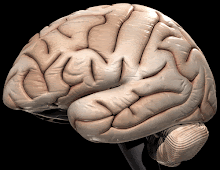Lie detector, also known as polygraph, is generally used during interrogation by police.
The instrument works by recording our physiological functions such as blood pressure, heartbeat, respiration and perspiration. A pneumograph tube is fastened around the subject's chest and a blood-pressure-pulse cuff is strapped around the arm. Psycho-galvanic skin reflex (electro-dermal response) and flow of current between different parts of the body are also measured.
Sensitive electrodes are used to pick up the impulses which are recorded on a moving graph paper. The parameters are recorded when a suspect answers questions put to him by an operator. The data is then used as a basis for deciding whether the person is lying or not.
While most of the questions asked are interrelated, some are included to improve the test's accuracy. The questions are usually answered in 'yes', 'no' mode only.
The modern polygraph was first constructed in 1921 by John A.Lagoon, a medical student at the University of California, along with a police officer. His instrument was capable of continuously recording blood pressure, pulse and respiration. As it recorded these conditions simultaneously it was called a polygraph. Though this has been in use since 1924, it has not developed into a complete fool-proof system and is yet to be accepted judicially.
The instrument works by recording our physiological functions such as blood pressure, heartbeat, respiration and perspiration. A pneumograph tube is fastened around the subject's chest and a blood-pressure-pulse cuff is strapped around the arm. Psycho-galvanic skin reflex (electro-dermal response) and flow of current between different parts of the body are also measured.
Sensitive electrodes are used to pick up the impulses which are recorded on a moving graph paper. The parameters are recorded when a suspect answers questions put to him by an operator. The data is then used as a basis for deciding whether the person is lying or not.
While most of the questions asked are interrelated, some are included to improve the test's accuracy. The questions are usually answered in 'yes', 'no' mode only.
The modern polygraph was first constructed in 1921 by John A.Lagoon, a medical student at the University of California, along with a police officer. His instrument was capable of continuously recording blood pressure, pulse and respiration. As it recorded these conditions simultaneously it was called a polygraph. Though this has been in use since 1924, it has not developed into a complete fool-proof system and is yet to be accepted judicially.
